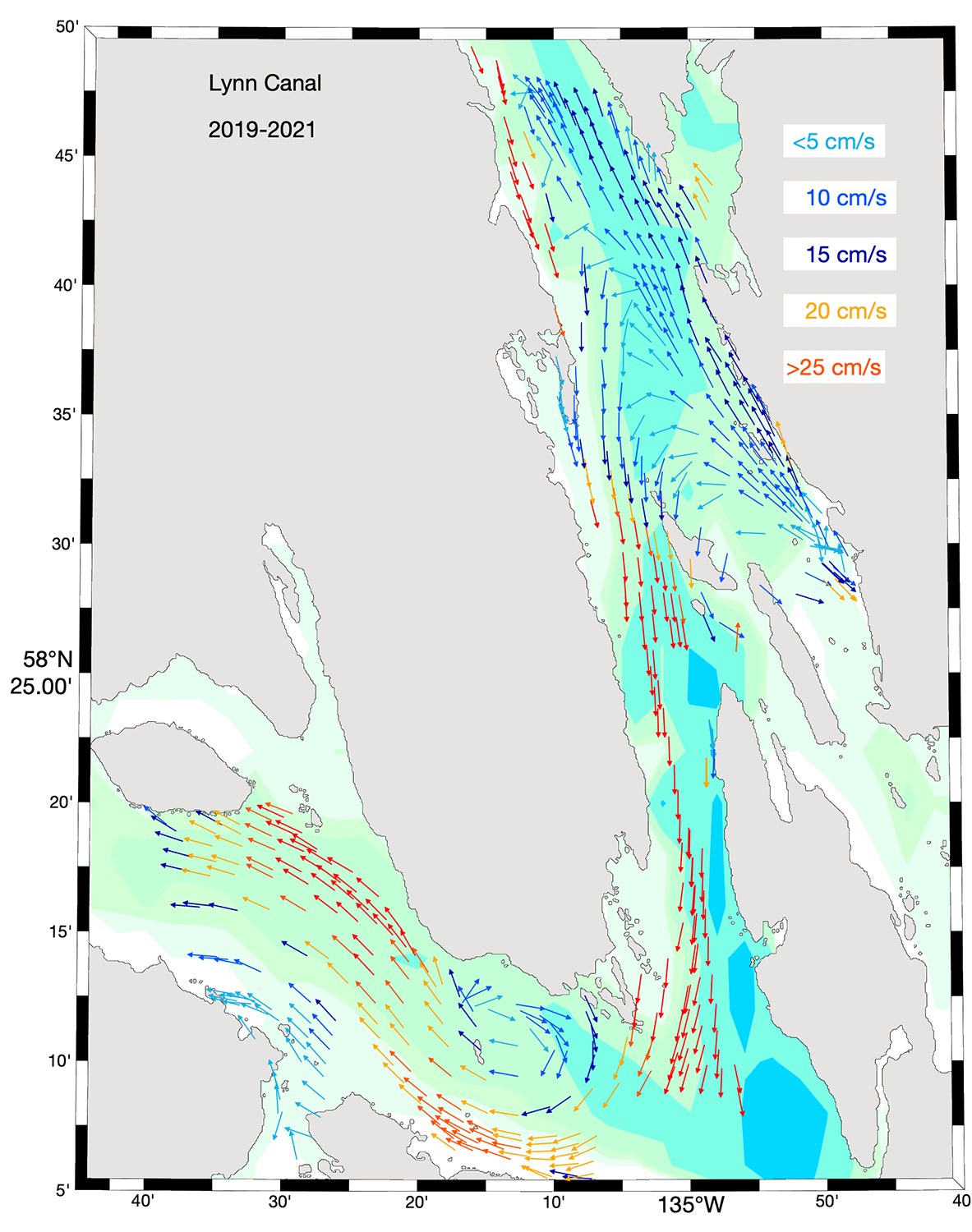Keeping up with Current Events
Three years of drifter deployments in Kachemak Bay, color-coded by salinity level. Video courtesy Mark Johnson.Think of them as high-tech messages in a bottle.

Drifter deployments in Lynn Canal, color-coded by velocity
For the past three years, EPSCoR researchers led by UAF Professor of Oceanography Mark Johnson have been deploying drifters into Kachemak Bay and Lynn Canal and seeing where they end up.
“The drifters track the surface currents, with positions collected at ten-minute intervals,” explained Johnson. “The data from all years are combined to create a map of the surface circulation that can be used to assess freshwater and larval pathways, and to provide insight about the fate of possible pollutants.”
From 2019-21, 170 drifters were dropped from research boats into Kachemak Bay, and 23 into Lynn Canal. Fire & Ice PI Brenda Konar and her students handled both deployment and recovery of all of the Kachemak Bay drifters. Johnson said that the vast majority of drifters in Kachemak Bay have been recovered and reused, but that the Lynn Canal drifters tend to head out to the open ocean (see image to right) and are harder to recover, which is part of the reason there have been fewer deployments there.
The drifters are equipped with GPSes and telemetry devices, as well as data loggers to track temperature and salinity. The GPSes and telemetry are used to track the drifters’ patterns of dispersion – scientists deploy four drifters at a time and record how they spread apart. Seeing how dispersion patterns diverge in different areas enables discoveries about how larvae, freshwater, dissolved gases, nutrients and contaminants behave in the water column.
Johnson said the drifters have led to a number of discoveries about currents and freshwater mixing, including one that stretches across regions. “The key finding for the big picture is that Lynn Canal and Kachemak Bay are connected, as we've had drifters exit Lynn Canal and drift to the west of Cook Inlet,” he noted. “This means that larvae have the potential to be transported from Lynn Canal to Kachemak Bay.”

Fire & Ice Coastal Margins graduate student Liza Hasan displays a captured drifter in Kachemak Bay, May 2019.
In terms of freshwater mixing, Johnson said the data show that both freshwater inputs and local winds combine to move the surface layer, and freshwater, around Kachemak Bay. He said they’ve found that the Wosnesenski River provides a considerable amount of freshwater to inner Kachemak Bay, but that more research needs to be done to understand the timing of it. The data also indicate that freshwater inputs are mixed into the upper 20 meters of the water column over the course of about a month, and then mix more deeply over a longer period; Johnson and members of the F&I Kachemak Bay Stream Team are preparing a manuscript on the subject.
Johnson said 2022 drifter deployments have already begun. “The ocean has huge variability, which means having 4 years of data is really important.”

